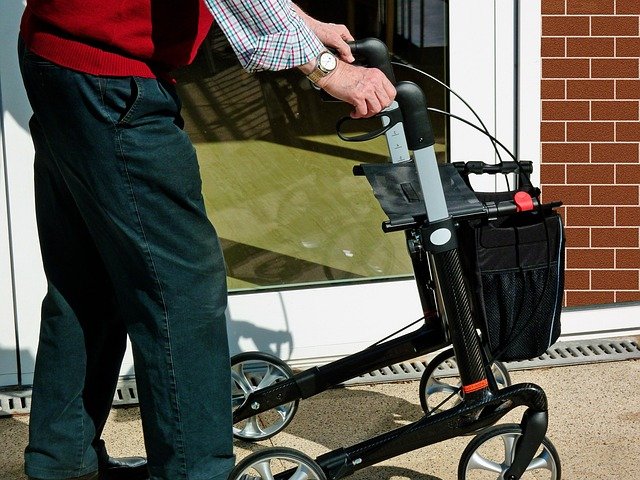Understanding Granny Pods: Senior Living Solutions Explained
Granny pods represent an innovative approach to senior living that combines independence with family proximity. These compact, self-contained units offer older adults the opportunity to maintain their autonomy while staying close to loved ones. As housing costs rise and family structures evolve, these auxiliary dwelling units are becoming an increasingly popular solution for multigenerational living arrangements.

Understanding Granny Pods: A New Senior Living Option
Granny pods, also known as accessory dwelling units (ADUs) or mother-in-law suites, are small, self-contained living spaces designed specifically for senior residents. These units typically range from 300 to 600 square feet and include essential amenities such as a bedroom, bathroom, kitchenette, and living area. Unlike traditional nursing homes or assisted living facilities, granny pods allow seniors to maintain their independence while remaining close to family members who can provide support when needed.
The concept has gained significant traction in recent years as families seek alternatives to expensive care facilities. These units can be either permanently installed structures or temporary modular homes that can be relocated as circumstances change. Most granny pods are designed with accessibility features and safety considerations specifically tailored to older adults’ needs.
Key Reasons Why Granny Pods Are Growing in Popularity
Several factors contribute to the increasing adoption of granny pods across communities. The primary driver is the desire for aging in place, allowing seniors to maintain familiar surroundings while having family support readily available. This arrangement often provides peace of mind for both the senior resident and their adult children.
Cost considerations also play a significant role in their popularity. Traditional assisted living facilities can cost between £2,000 to £4,000 per month, while granny pods offer a more economical long-term solution. Additionally, these units can increase property values and provide rental income potential when not occupied by family members.
The flexibility of granny pods appeals to many families dealing with changing circumstances. Unlike permanent home additions, many granny pod options can be removed or relocated, making them suitable for temporary living arrangements or changing family needs.
Legal & Financial Aspects of Granny Pods Explained
Navigating the legal requirements for granny pod installation requires careful consideration of local planning regulations and building codes. Most councils require planning permission for new structures, and specific regulations govern the size, setback requirements, and utility connections for accessory dwelling units.
Building regulations compliance is essential, covering aspects such as structural integrity, electrical systems, plumbing, and fire safety measures. Many areas have specific zoning restrictions that may limit or prohibit granny pods, making research crucial before investment.
Financing options vary considerably, with some homeowners using home equity loans, personal savings, or specialized ADU financing programs. Insurance considerations include updating homeowner policies to cover the additional structure and ensuring adequate liability coverage for the senior resident.
Top Safety & Accessibility Features for Granny Pods
Modern granny pods incorporate numerous safety and accessibility features designed specifically for senior residents. Standard accessibility features include wider doorways to accommodate wheelchairs or walking aids, step-free entries, and accessible bathroom fixtures with grab bars and walk-in showers.
Safety technology integration often includes emergency call systems, motion sensors, and smart home features that allow family members to monitor their loved one’s wellbeing remotely. Many units feature non-slip flooring, adequate lighting throughout, and easily accessible electrical outlets and switches.
Climate control systems ensure comfortable living conditions year-round, while security features such as keyless entry systems and video intercoms provide both convenience and safety. Some advanced models include medication management systems and health monitoring capabilities.
Navigating Granny Pod Challenges & Installation Choices
Several challenges commonly arise during granny pod planning and installation. Utility connections often present the most complex hurdle, requiring professional assessment of existing electrical, water, and sewage systems. Some properties may need significant utility upgrades to support an additional dwelling unit.
Site preparation considerations include ground leveling, foundation requirements, and ensuring adequate drainage. Access routes for delivery and installation must be evaluated, particularly for larger modular units that require crane placement.
Maintenance responsibilities should be clearly established before installation, including routine upkeep, repairs, and seasonal preparations. Weather protection and insulation quality significantly impact long-term comfort and energy efficiency.
| Provider | Unit Type | Size Range | Cost Estimation |
|---|---|---|---|
| Pod Space | Modular Pod | 300-500 sq ft | £45,000-£75,000 |
| Granny Flats UK | Permanent Structure | 400-600 sq ft | £60,000-£95,000 |
| Tiny House Company | Mobile Unit | 250-400 sq ft | £35,000-£55,000 |
| Garden Annexe | Garden Room | 300-450 sq ft | £40,000-£70,000 |
Prices, rates, or cost estimates mentioned in this article are based on the latest available information but may change over time. Independent research is advised before making financial decisions.
Granny pods represent a practical solution for families seeking to balance senior independence with accessible support systems. While initial costs and regulatory requirements present challenges, the long-term benefits often outweigh these considerations. Success depends on thorough planning, compliance with local regulations, and selecting appropriate features for the intended resident’s specific needs. As demographic trends continue favoring aging in place, granny pods are likely to become an increasingly common sight in residential areas across the country.




